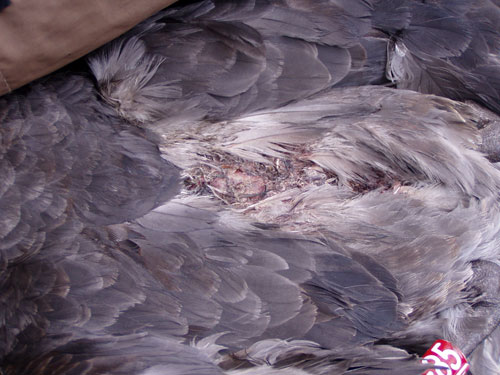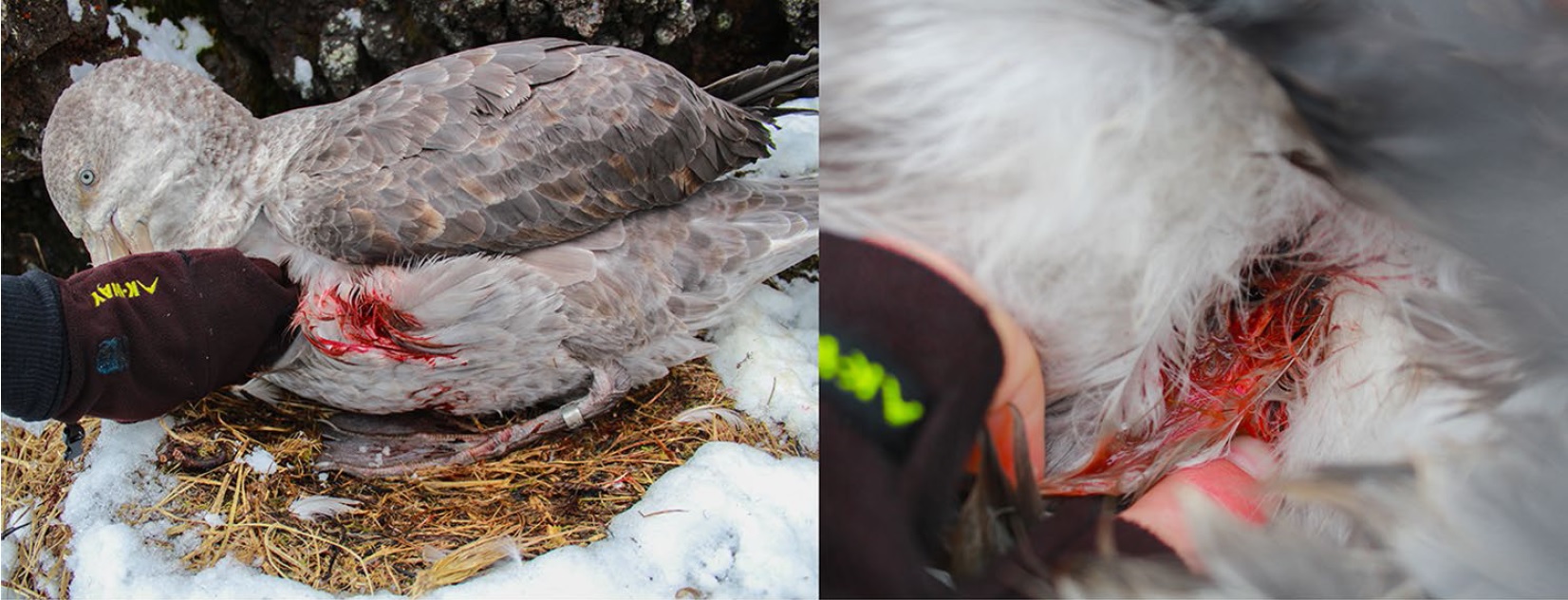
Exposed bone on the rump of an incubating Northern Giant Petrel on Marion Island, August 2003; photograph by John Cooper
Christopher Jones (FitzPatrick Institute of African Ornithology, University of Cape Town, South Africa) and colleagues published in the journal Polar Biology in 2019 on what they considered to be the first record of an attack by introduced House Mice Mus musculus on an adult Northern Giant Petrel Macronectes halli on Marion Island. They photographed flank wounds consistent with a mouse attack in September 2017, noting that whereas mice are significant predators of seabird chicks on islands where they are the only introduced mammal, there are very few records of attacks on adult birds.
In August 2003 John Cooper observed an incubating Northern Giant Petrel on Marion Island with a large rump wound that exposed bone. The next day the colour-banded bird was no longer present and the abandoned egg was broken. A long-lost photograph of this incident has recently been found in support of mice attacking an adult seabird at Marion Island 14 years earlier than the published record.

A flank wound on an incubating Northern Giant Petrel on Marion Island, September 2017; photographs by Christopher Jones
House Mice were first recorded attacking Wandering Albatross Diomedea exulans chicks on Marion Island in 2003; subsequently attacks have been recorded on chicks of the other three albatross species that breed on the island, as well as on two species of burrowing petrels.
References:
Dilley, B.J., Schoombie, S., Schoombie, J. & Ryan, P.G. 2015. ‘Scalping’ of albatross fledglings by introduced mice spreads rapidly at Marion Island. Antarctic Science 28: 73-80.
Dilley, B.J., Schoombie, S., Stevens, K., Davies, D., Perold, V., Osborne, A., Schoombie, J., Brink, C.W., Carpenter-Kling, T. & Ryan, P.G. 2018. Mouse predation affects breeding success of burrow-nesting petrels at sub-Antarctic Marion Island. Antarctic Science 30: 93-104.
Jones, C.W., Risi, M.M., Cleeland, J. & Ryan, P.G. 2019. First evidence of mouse attacks on adult albatrosses and petrels breeding on sub-Antarctic Marion and Gough Islands. Polar Biology 42: 619-623.
Jones, M.G.W. & Ryan, P.G. 2009. Evidence of mouse attacks on albatross chicks on sub-Antarctic Marion Island. Antarctic Science 22: 39-42
John Cooper, ACAP Information Officer, 15 March 2022

 Français
Français  English
English  Español
Español